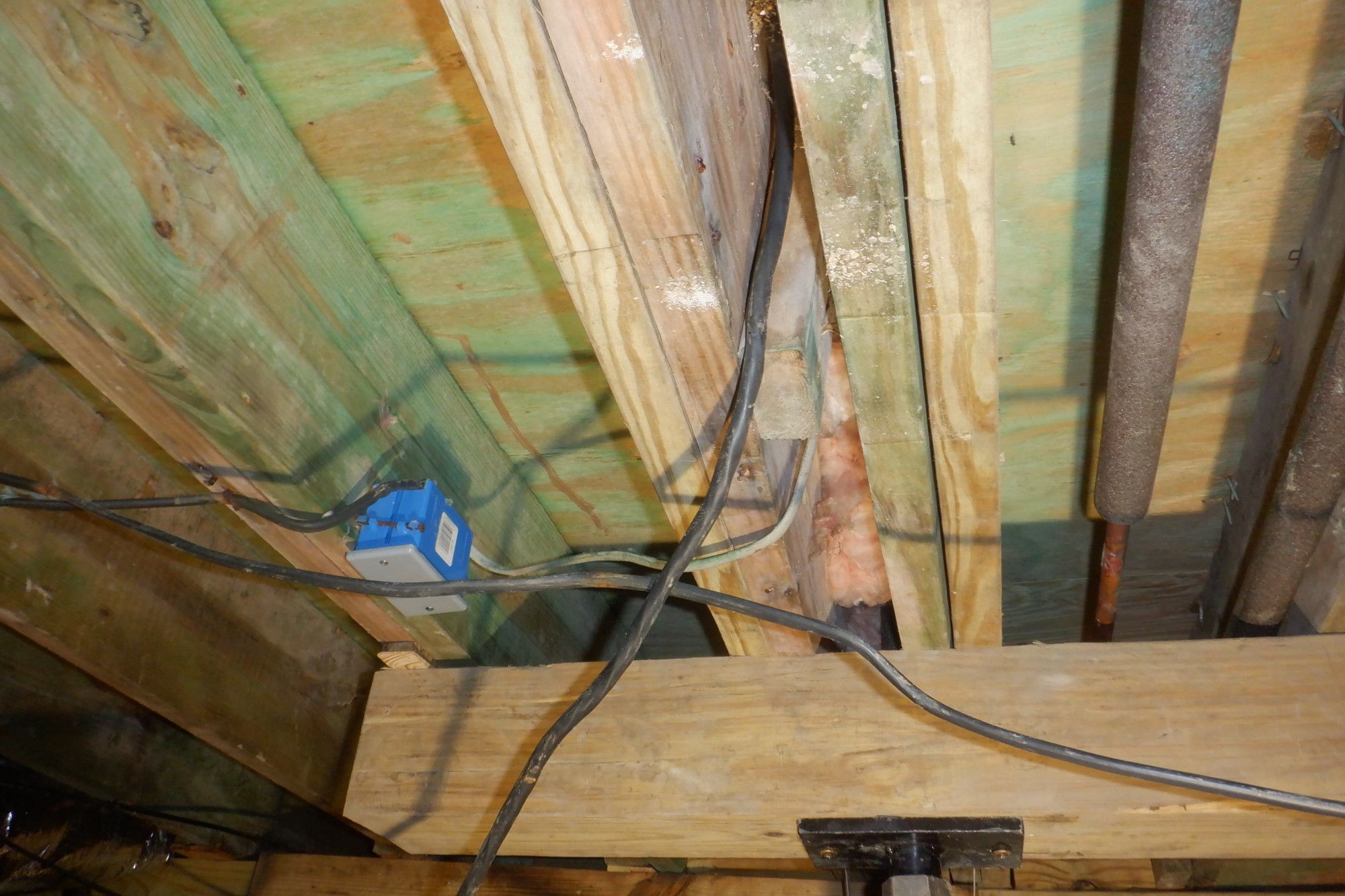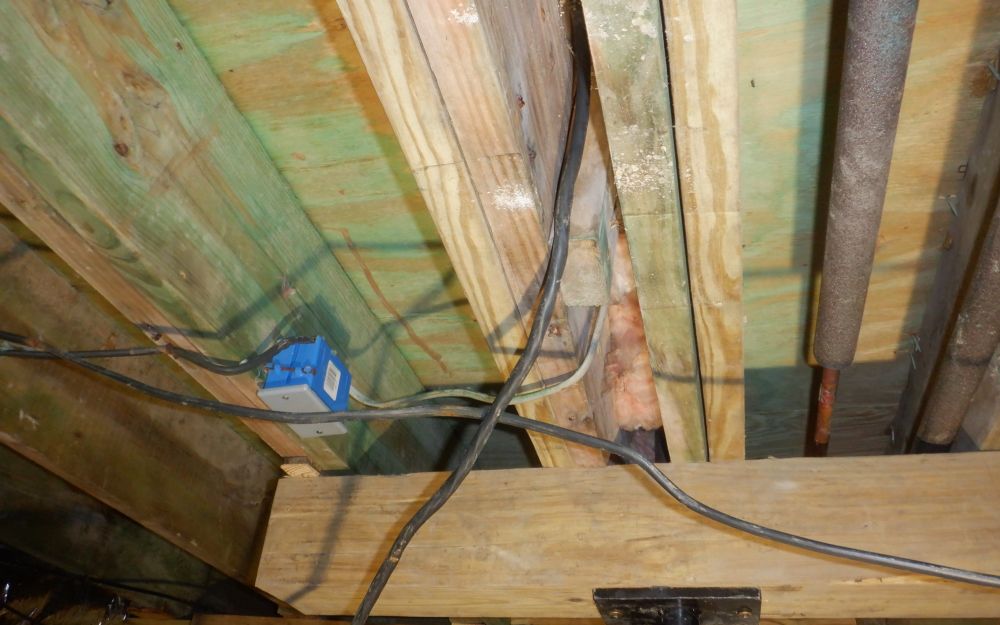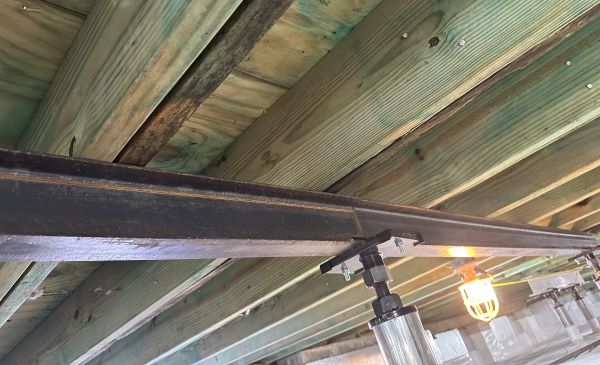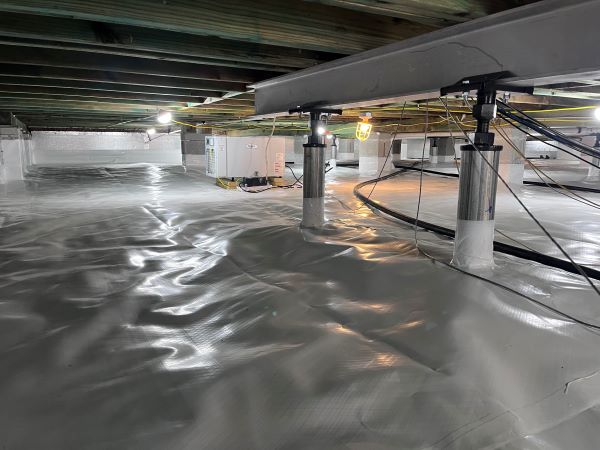Joist Sistering: The Key to Repairing Floor Joists



Sagging floors add character to an old house—right? Well, character is one thing. Structural damage to a house, on the other hand, is a whole other layer of problems that should not go unchecked.
Having sagging, moving, or shifting floors may indicate that there’s a bigger problem underneath. It most likely points to an issue with the floor joists that are supporting the floor.
If your floors are sagging, then it might be time to make some repairs. Read on to find out how professionals use joist sistering to repair old or damaged floor joists.
For professional floor joist repair services in the greater Hampton Roads, VA region, learn more about BAY Crawl Space & Foundation Repair at our Home Page, About Us Page, or Request A Quote Page.
Purpose of a Floor Joist
Floor joists are structural members used in the framing of a floor structure to support a space from beam to beam. Most people understand that without floor joists, your floors wouldn’t have any structural support and would eventually collapse from the weight. Not only do they support your floors, but they also carry the weight of the walls, ceilings, furniture, appliances, and the people who walk on them.
Reasons Floor Joists Get Damaged
In residential homes, most floor joists come from natural or engineered wood. These joists are sometimes doubled or even tripled to give extra load capacity depending on where in the house and what the building codes require. So why do they fail sometimes?
There are 3 main reasons for floor joists failing. The first is the loss of integral strength due to crawl space moisture. Oftentimes, crawl spaces contain moisture from exposed damp ground, groundwater flooding, and outside humidity. This dampens and weakens the wood, leading to fungus and wood rot.
Another reason joists fail is due to water damage. If a house has a plumbing leak, it can cause wood to deteriorate more rapidly. And to compound it, if a joist already sags, water will naturally expedite the damage and movement.
The last common reason for floor joist failure is termites. Termite infestations in homes can cause significant damage to the structure of homes, leading to sagging floors.
Signs That a House Might Have Structural Damage
A sagging floor is the biggest telltale sign that there are issues within the structure of your home. Doors that stick or drag on the floor cracked walls or ceilings, beams that bow, and cracks in the foundation are also signs that can indicate structural damage within a house.
Expert Advice
Depending on how badly your floors are sagging or moving, it’s wise to get the advice of multiple structural experts before going ahead with any repairs. You’ll want advice from foundation repair experts and possibly structural engineers if the problem seems complex. In the case of structural repairs, it’s best to hire a professional with years of experience to do the job.
Professionals Fix Structural Damage With Joist Sistering
Joist sistering is adding an extra identical floor joist to a damaged or inadequate floor joist and tieing the two together with screws or nails. It is a very effective way of adding the additional strength needed to hold up a sagging floor. Let’s take a closer look at how this was accomplished.
Leveling the Floors
Damaged joists usually mean sagging floors—right? Well, to make a floor level again, it needs lifting.
In order to lift a sagging floor, install a screw jack and beam underneath to push the damaged sagging joist(s) up. A screw jack is essentially a metal support post that raises or lowers by the turning of a threaded steel pipe that’s inside of it (hydraulic jacks are often used for this purpose as well).
If there are significant sags in multiple joists spanning the floor, then professionals will use multiple jacks to do the heavy lifting. Holding a 4ft level up to the joists will show how much a floor could need to be jacked up.
Lifting a house always includes the risk of damage. Lifting floor joists can cause cosmetic damage to paint, drywall, flooring, counters, trim, etc. It’s important to lift carefully, but some damage cannot be avoided if the lift is necessary.

Sistering the Joists
To repair floor joists, the damaged joist is sistered together with a new piece of wood. Usually, the new piece of lumber spans the length of the old one. At times when this isn’t possible, shorter pieces are used instead (this is sometimes referred to as scabbing).
When a joist is weight-bearing, meaning it holds up a wall or has extra weight attached to it, it’s sometimes necessary to sister multiple pieces of new material to the old one. This is usually done by “sandwiching” the old joist in the middle of the two new ones. Doing this gives additional support to the joist.
Doing Joist Repairs Yourself
Working on your house yourself can save you money as well as give you a sense of pride and ownership. If you have the tools and the time, you might be tempted to take on the job and try floor joist repair sistering yourself. Below are some issues you might run into along the way.
- Incorrectly Notching Floor Joists: Maximum notching at the end of the joist cannot exceed 1/4 of the joist depth. Maximum notching in the outer third of the joists is 1/6 of the joist depth, and no notching in the middle third of the joist. Incorrect notching at any length of the board can seriously affect the integrity of a joist.
- Failing to Level Joists: Leveling a floor is a process that sometimes takes days. This is because jacking up a joist may cause the rest of the house to settle in ways that weren’t expected.
- Sister Board Not Level: Sistering a new board to an old joist often takes multiple people to hold up in order to get level. Not leveling the new board to the old joist will defeat the purpose of the job.
- Failure to Properly Secure Boards Together: Not knowing how to secure sistering joists together can cause structural problems in the future.
- Insufficient Overlapping: Knowing weight loads is important when figuring out how much to over-lap boards. Failure to over-lap boards enough may cause future sagging to reoccur.
- Not Using Enough Support: This happens a lot in the case of load-bearing walls and other unique circumstances when more support is needed to hold up a joist.
Building code for sistering joists is also important to know when making joist repairs. Not knowing these will lead to problems if you ever plan to sell your house. Sometimes, building permits are needed as well.
Other Repairs Needed
Another reason to hire a trusted professional when making joist repairs is that other issues often arise from damaged floor joists. Usually, water damage also occurs in subfloors and floors and sometimes needs replacing.
A professional will spot where moisture is coming from and help prevent future problems from occurring. They will also determine if beams need replacing and/or additional support beams placed.

Length of Time it Takes For Repairs
Jacking up a joist and raising a sagging floor can be a relatively quick process. An expert repair technician will know the size of the board to install and how to perform the repair efficiently.
If lifting the floors more than 1/2″ is your goal, it should be done over time to avoid damage. Sometimes, this means that a screw jack is only raised once or twice a month, moving up only 1/4″ at a time. If your sag is 1″ or 2″, then you can see how this process would take a little longer. Expect new cracks to form on walls and ceilings after they’ve been jacked up.
Everything Else You Need to Know: Joist Sistering FAQs
How Long Does Joist Sistering Take?
The time it takes for floor joist repair depends on a few factors. This includes the size of the area, the number of joists that need sistering, and more. Upon consultation, our contractors can give you a more precise estimate based on the details of your project.
How Much Does Joist Sistering Cost?
Costs for repairing floor joists may vary. Factors include the size of the area, materials used, and how many joists need sistering. Following consultation, we can deliver a detailed breakdown of all costs associated with your project.
Do I Need a Permit for Joist Sistering?
The need for a permit will vary depending on your location and the specific details of your project. Often, a building permit is necessary. At BAY, we’ll make sure all permits are in order before construction.
Will Sistering Joists Solve All My Structural Problems?
Sistering floor joists can help reinforce and strengthen your floor or ceiling. However, they may not resolve all your structural problems. It’s important to consult a professional to decide the best course of action for your specific situation.
How Long Will My Reinforced Floor or Ceiling Last After Joist Sistering?
The lifespan of your reinforced floor or ceiling will depend on a variety of factors. These include the quality of the materials used, the level of maintenance, and the amount of weight that is placed on the structure. Still, joist sistering can help extend the life of your floor or ceiling by reinforcing and strengthening the existing joists.
Will Joist Sistering Cause Any Damage to My Home?
Done properly, joist sistering should not cause any damage to your home. However, if an existing sister joist is damaged, it may be necessary to remove it, which could cause some disruption to your home. To help cut any potential damage and protect your home during the project, we recommend consulting with a professional.
Call in The Professionals
At BAY, our experts have years of experience in identifying the causes of structural damage within your home. If you have concerns about the integrity of your foundation, we offer free, no-obligation inspections and estimates. When we inspect your home, we explain the problems and solutions and explore multiple options to find the best solution for you—joist sistering is only one of our areas of expertise.
If you’ve found this article useful but still have questions about your foundation, check out our BAY’s Foundation Repair Q&A.

